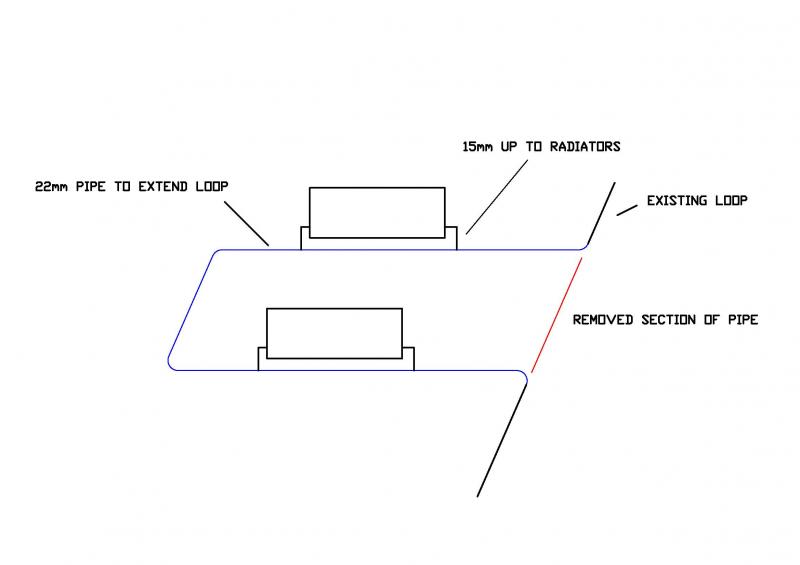I just visited my mother and step father who have just had two new radiators fitted and some others replaced for newer style convecting type. The plumber in his own admittance after the first day of installation had never worked on a single pipe system before ! ( Alarm Bells !! ) and obviously was not AT ALL clued up on how to connect to it. Firstly the run for the new rads downstairs required a feed to come from the upstairs radiators ( so they said ) which I know is'nt ideal. They had fed two 15mm pipe's down from the front and back rooms thinking it was just a standard 2 pipe system and quickly realising after trying to re-commission the system it would not work. They have now fitted a 22mm pipe from a 22mm pipe coming from the floor to upstairs and fed it along to the new rads, putting tees by each trv and lsv. They then connected the end of these new rads to one of the 15mm pipes going back upstairs. The system worked with him leaving saying " leave it all on so to get all the air out etc !" The heating soon started to shut down with radiators going cold. He was then suggested by another EXPERT plumber to end the new radiator run at the last new rad by capping off the 15mm link back into the loop. As you guessed that did not work. This just created a branch off the loop which went nowhere. If someone could confirm if I have the following right please ?
1. I guess they have fitted standard TRV's which are a no no for single pipe systems ?
2. Will the 15mm pipe be ok for the return off the new radiators ? ( if i reconnect their mod )
3. Are there large bore lsv's available ?
It makes me angry that even after recommendation that some tradesman think a little bit of knowledge means they know what they are doing in jobs that aren't textbook jobs! In my job, if I dont now how to do something, you dont do it or have a backup plan to keep the customer happy !

1. I guess they have fitted standard TRV's which are a no no for single pipe systems ?
2. Will the 15mm pipe be ok for the return off the new radiators ? ( if i reconnect their mod )
3. Are there large bore lsv's available ?
It makes me angry that even after recommendation that some tradesman think a little bit of knowledge means they know what they are doing in jobs that aren't textbook jobs! In my job, if I dont now how to do something, you dont do it or have a backup plan to keep the customer happy !


